NAFTA Tariff Preference Processing and Global Trade Systems Benefits

Tariff Preferences are measures granting preferential customs treatment for goods from certain countries and geographical areas. They provide reduced rates of customs duty (preferential customs duty rates) and in some cases, exemption from customs duties.
What is the Economic significance of preference processing?
Tariff preferences are of great benefit to both the importing and exporting economies.
- Imports: Lower import costs by taking advantage of reduced or zero import duties
- Exports: More competitiveness because customer has to pay lower – or no – customs duties
What is NAFTA - North American Free Trade Agreement?
North American Free Trade Agreement signed in 1992 and entered into force in 1994. Original Members Canada, Mexico and USA.
NAFTA eliminates tariffs on most goods originating in a member state over a maximum transition period of 15 years (during the transition period, rates of duties will vary depending upon which NAFTA country the goods were produced in). NAFTA requires detailed origin certification for NAFTA claim on imports.
False claims of improper record keeping will lead to heavy fines.
NAFTA facts?
- ⅓ of all North American growth created from the NAFTA agreement
- 85% of all Canadian exports are to NAFTA members
- Will expand within 5 years to include more countries within the Americas
- NAFTA will evolve into the FTA(A)
- Goods that qualify as originating will lose that status if they subsequently undergo any operation outside the NAFTA region other than unloading, reloading, or any other operation necessary to preserve them in good condition or to transport the goods to Canada, Mexico or the United States
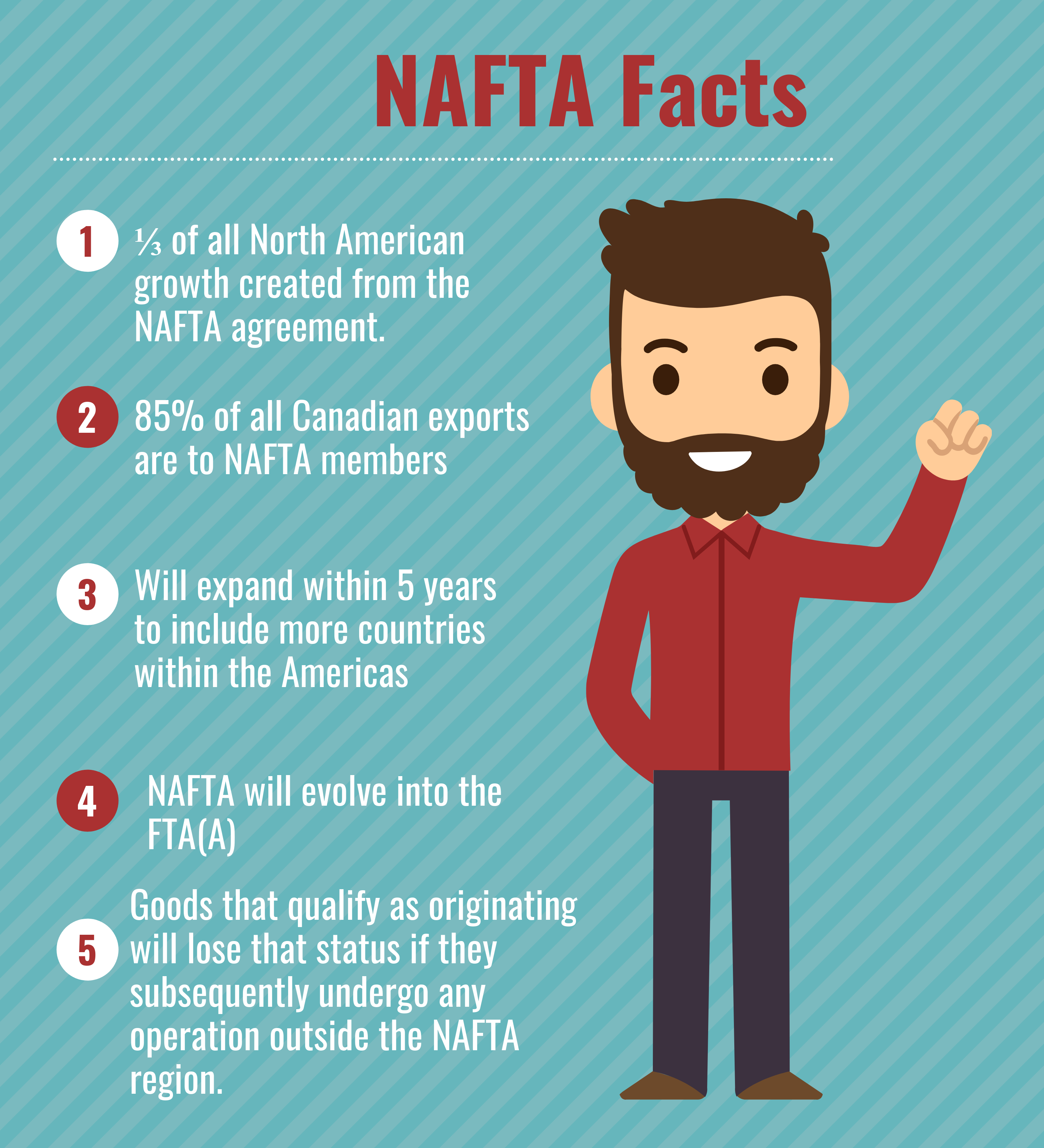
NAFTA facts
What is NAFTA Origin?
Originating is a term used to describe those goods that meet the requirements of Article 401 of the Agreement. Article 401 defines the term “originating” as follows.
- Goods wholly obtained or produced entirely in the NAFTA region
- Good produced entirely in the NAFTA region exclusively from originating materials
- Goods meeting a specific Annex 401 origin rule
- Assembled goods and goods classified with their parts which do not meet the Annex 401 rule of origin but contain 60 percent regional value content (RVC) using the transaction method or 50 percent RVC using the net cost method
What are the Methods for qualifying products as originating within the NAFTA?
- Tariff shift (rules of origin)
The expression tariff shift refers to the requirement that non originating materials undergo a change in tariff classification as a result of production carried out in the NAFTA territory in order for the finished good to qualify as an originating good. Any non-originating materials that are used to produce the good that companies want to certify as originating must be classified in a different HS code from the good.
- De minimis rule (maximum of 7% non-originating goods)
The de minimus rule allows a product to qualify for preferential treatment if no more than 7% of the product is composed of non-originating goods.
- Certificate of Origin (vendor declaration)
Your vendors provides you with a document certifying that the product or its components originate in your country or economic zone.
What is Regional Value Content?
Most products specific rules in Annex 401 are based solely on Harmonized System (HS) tariff classification changes.
However, in limited cases, some specific NAFTA rules of origin require that a good must have a minimum regional value content in order to obtain NAFTA tariff preference.
For example, a rule might specify that at least 50% of the value of a product must be North American in order to qualify for NAFTA treatment.
Article 402 gives two formulas for calculating the regional value content. In general, the exporter or producer may choose between these two formulas:
The "transaction value" method or the "net cost" method.
Having two methods gives producers more than one way of demonstrating that the rule of origin has been satisfied.
A producer may choose the most advantageous method for him.
What is Transaction Value Method?
The transaction value method calculates the value of the non originating materials as a percentage of the transaction value of the good, which is the total price paid for the good, with certain adjustments for packing and other items.
Using this method, the value of non-originating materials can be calculated as a percentage of the
invoice price which is usually the price actually paid for them.
Because the transaction value method allows the producer to count all of its costs and profit as territorial, the required percentage of regional value content under this method is higher than under the net cost method.
In some situations, the transaction value method cannot be used and the net cost method is the only alternative.
What is Net Cost Method?
The net cost method calculates the regional value content as a percentage of the net cost to produce the good. Net cost represents all of the costs incurred by the producer minus expenses for sales promotion (including marketing and after-sales service), royalties, shipping and packing costs and non-allowable interest costs. The percentage content required for the net cost method is lower that the percentage content required under the transaction value method because of the exclusion of certain costs from the net cost calculation.
The net cost method must be used when there is no transaction value in some related party transactions
for certain motor vehicles and parts when a producer is accumulating regional value content to determine the regional value content for designated intermediate materials If the result using the transaction value method is unfavorable, the producer may revert to the net cost method.
Preference Process Flow
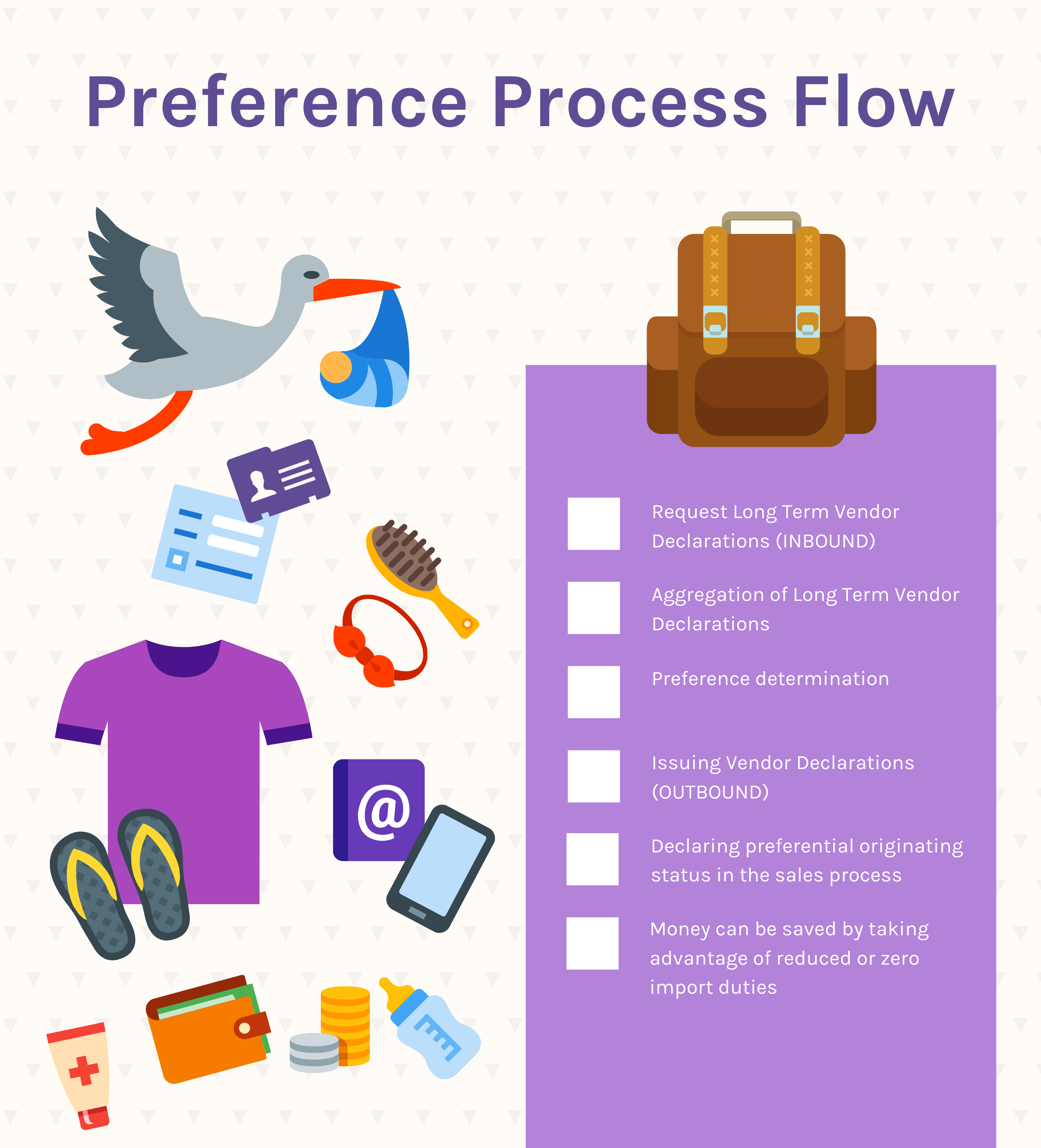
Preference Process Flow
Benefits of using Global Trade Systems for NAFTA?
- Versatile features for requesting vendor declarations and sending reminders
- Clear, effective management and archiving of vendor declarations
- Aggregation of vendor declarations
- Extensive options for determining preferential origin
- Preference determination across plants
- Determination of preference eligibility in sales documents
- Configurable Materials
- Features for printing movement certificates for the customs authorities including NAFTA Certificate of Origin
- Option for generating vendor declarations for customer purposes
- Lower import costs
- More competitiveness in global markets
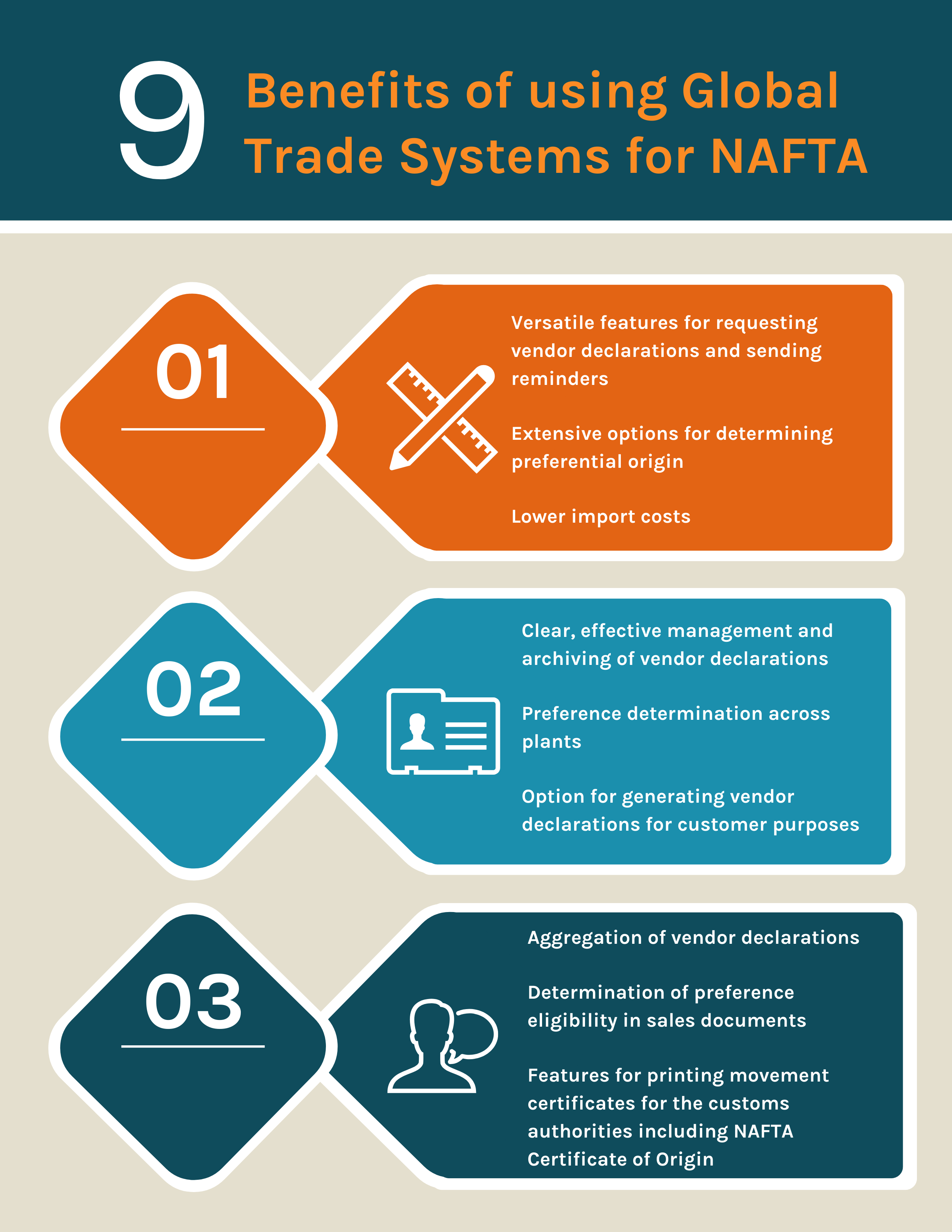
Benefits of using Global Trade Systems for NAFTA
What is NAFTA?
North American Free Trade Agreement signed in 1992 and entered into force in 1994. Original Members Canada, Mexico and USA. NAFTA eliminates tariffs on most goods originating in a member state over a maximum transition period of 15 years (during the transition period, rates of duties will vary depending upon which NAFTA country the goods were produced in).
What are NAFTA facts?
⅓ of all North American growth created from the NAFTA agreement. 85% of all Canadian exports are to NAFTA members. Will expand within 5 years to include more countries within the Americas

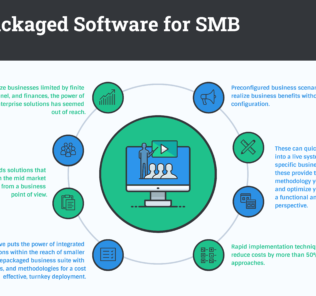
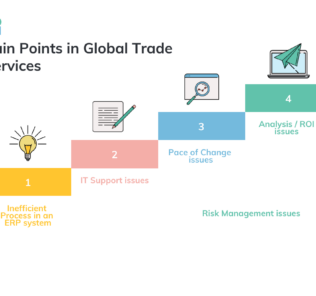

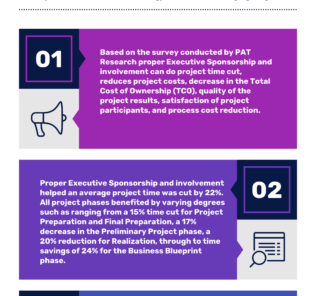

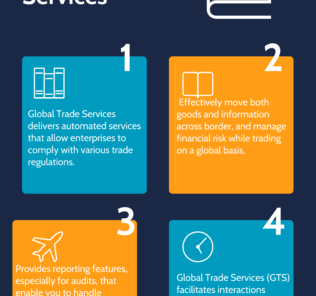




By clicking Sign In with Social Media, you agree to let PAT RESEARCH store, use and/or disclose your Social Media profile and email address in accordance with the PAT RESEARCH Privacy Policy and agree to the Terms of Use.